Introduction
This is pure madness that allopathic medicine and psychiatry are proposing that many psychotic patients take medication FOR LIFE and people are being sucked into this insanity..WAKE UP PEOPLE…for goodness sake..do you know what damage you are inflicting on your body..if you have a problem with depression or bipolar disorder..THEN CHANGE YOUR LIFESTYLE…CHANGE YOUR DIET, SUPPLEMENT, EXERCISE, SOCIALIZE…DISCUSS. These drugs will shape shift your body and after a while you won’t remember what NORMAL WAS LIKE..and taking these drugs over a long period of time will erode your health and may lead to premature death.
Case Study: Cathy
Summarised from Robert Whitaker’s splendid book `Anatomy of an Epidemic`
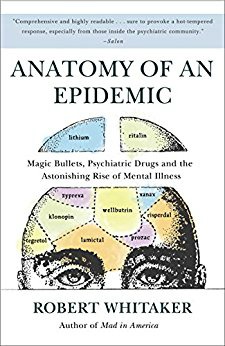
Growing up with her father and 2 brothers she was often the target of her brothers bullying. During her high school years she was hostile, angry and withdrawn.

At college she partied a lot, smoking weed and began to have difficulty concentrating. An incident in her dorm room caused her to be hospitalised days before her 18th birthday (this was 1978), diagnosed with Manic depression she was prescribed Haldol and Lithium.

As you may remember I covered clozapine in Part 2 which is also a neuroleptic drug (like Haldol). I cannot imagine why she was prescribed such a neurotoxic mix of these 2 drugs, and we know that studies performed in the mid 70`s to the 1990`s confirmed this toxic mix but again `the same ignorant behaviour, we have no time to dig into any research that may have been done to verify any potentiation,`who cares?` let’s just fill the body with toxic poison, but even today nobody knows how these drugs work, let alone how toxic they are as a single drug and especially as a drug cocktail.
For the next 16 years she took her medicine like a compliant guinea pig but she hated them because Haldol stiffened her muscles and made her drool (remember the extra-pyramidal adverse effects from clozapine which included acute dystonia (repetitive muscle contractions), dyskinesia (involuntary muscle movements) and akathisia (restlessness) and long term Parkinson’s and/or Tardive Dyskinesia (stiff jerky movements of the face and body, grimacing and sticking out the tongue).

In addition Lithium made her depressed..wait a minute..Lithium is a medicine that is used to treat mood disorders: depression and Bipolar affective disorder (Manic depression)..so why would ANY SANE PERSON prescribe a drug to treat depression when the drug actually causes depression. By the way, this combination of Lithium and Haldol can cause Encephalopathy (a syndrome of overall brain dysfunction) and coma.

This is now 1994, and Cathy stopped taking the medication, but in early 1994 she was hospitalised with a new diagnosis `Schizoaffective` which is described as a combo condition of schizophrenia, depression, hallucinations and delusions. Oh, “since you have a Schizo Combo we are going to give you a drug combo”, and she was prescribed Haldol (again), Ativan, Tegretol, Halcion and Cogentin. WHAT!!!!!, does anybody on the planet know what the expected outcome would be taking this drug mixture???:
- Haldol is prescribed for Schizophrenia,
- Ativan is prescribed for anxiety,
- Tegretol, is prescribed for seizures, nerve pain and bipolar disorder,
- Halcion is prescribed for insomnia
- Cogentin was prescribed as an antidote for the side effects from Haldol
HALDOL- Side Effects
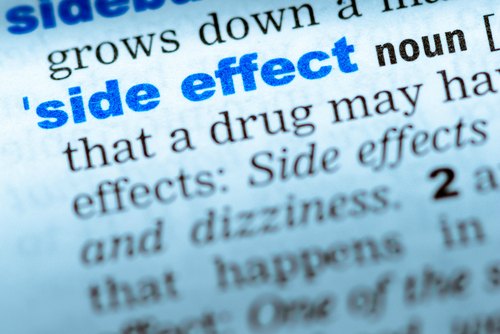
Let us look at this for a moment Haldol has this scatter gun affect interfering with some 19 receptors located all over the brain causing the following side effects:
Common (>1% incidence)
- Extrapyramidal side effects including:
- Dystonia(continuous spasms and muscle contractions)
- Muscle rigidity
- Akathisia (motor restlessness)
- Parkinsonism (characteristic symptoms such as rigidity)
- Hypotension
- Anticholinergic side effects such as (These adverse effects are more common than with lower-potency typical antipsychotics, such as chlorpromazine and thioridazine.):
- Constipation
- Dry mouth
- Blurred vision
and 53 Rare (<1% incidence) side effects including insomnia, seizure, depression, agitation, pulmonary embolism, sudden death (well I am glad that’s rare!!!), hepatitis, anorexia.
…wait a minute, wasn’t she taking drugs to treat anxiety, seizures and insomnia?, but this drug can cause these problems, be it rare, as it is stated on the drugs.com website, but I don’t believe that, because, given the unique circumstances in individuals, it can occur, and since it is posted as such, the manufacturers of this drug know about it. In fact, on the Rxlist it states that:…. Common side effects of Haldol include nausea, vomiting, diarrhea, dry mouth, nervousness, headache, dizziness, spinning sensation, drowsiness, sleep problems (insomnia), restlessness, anxiety and mood changes. As I said, I don’t believe insomnia, anxiety and mood changes are rare since the Rxlist website state they are common.
Dystonia
Another alarming side effect is Dystonia…do you know what this is??..it is continuous spasms and muscle contractions as stated above..but this means that the jaw can get locked, the eyes may roll back in the head and become locked. Dystonia can also be life threatening since the spasm can also affect the larynx muscles preventing air getting into the lungs..yeah you guessed it Asphyxiation and death (according to the Canadian movement of disorder group). This is why Cogentin is used as an antidote because it is a Anticholinergic drug that blocks Acetylcholine neurotransmitters in the parasympathetic branch of the autonomic nervous system, responsible for involuntary movement of smooth muscle in the GI Tract, urinary tract and the Lungs.
Akathisia
Another alarming side effect is Akathisia….this condition is described by Peter Briggin in his book ‘Medication Madness’ as a ‘Painful dance of death’, meaning that it can drive people to suicide, violence and madness. Can you imagine living in a body that is incapable of relaxing and to sit still, attempting to abate the torment by moving around. Can you also imagine if both Dystonia and Akathisia erupt simultaneously. So not only can you not sit still, you suffer with involuntary, continuous spasms and muscle contractions, a ‘double whammy’ to heighten aggression because you want it to stop..but the only way, is to stop taking the drug. The psychiatric diagnostic manual DSM states that the newer SSRI antidepressants cause these conditions but as Peter Briggin points out drug manufacturers have known for 20 years that Paxil, Prozac, Zoloft, and Celexa all cause these conditions.
COGENTIN- Side Effects
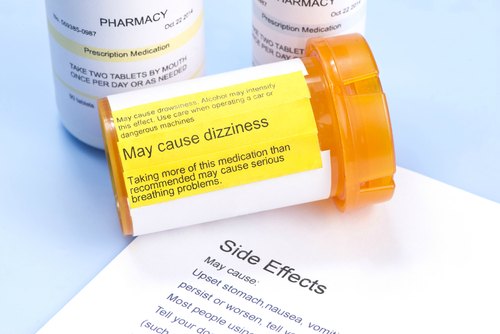
What are some of common side effects of Cogentin…yeah you guessed it…difficulty in swallowing, speaking, passing urine, painful urination, decrease in urine volume (no kidding !!..goes without saying), decrease in frequency of urination, burning while urinating..so let me get this straight if I take this drug it is possible that frequency of urination will diminish, and when I do urinate it is going to be difficult and it might be painful, and it might even burn…Well folks break out the Cogentin I am in need to block my autonomic nervous system and suffer while I urinate, but at least I won’t get lock jaw or get Asphyxiated….God almighty,
PEOPLE BEFORE YOU EVEN CONTEMPLATE TAKING THESE DRUGS (WHICH YOU SHOULD AVOID LIKE THE PLAGUE ANYWAY) DO SOME RESEARCH YOURSELF BECAUSE NOBODY ELSE IS GOING TO DO IT FOR YOU.
So getting back to our story about Cathy, fortunately for her, her Psycho’s…excuse me her Psychiatrists decide to remove the drug cocktail when she was released from hospital, ‘a new girl’..and she was prescribed one drug Risperdal. So what joys can we expect from this wonder poison..well lets see..oh Cathy is lucky because if this were a male you are supposed to call a doctor at once if you have a painful erection lasting 4 hours or longer. What else ?…
RISPERDAL- Side Effects
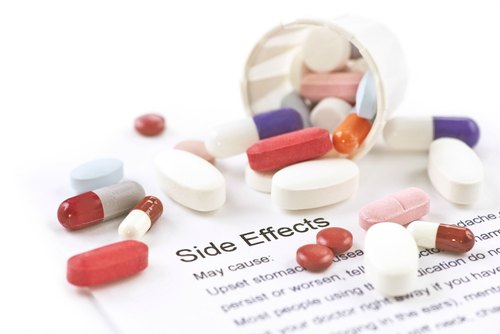
Call your doctor at once if you have:
- uncontrolled muscle movements in your face (chewing, lip smacking, frowning, tongue movement, blinking or eye movement);
- breast swelling or tenderness (in men or women), nipple discharge, impotence, lack of interest in sex, missed menstrual periods;
- severe nervous system reaction – very stiff (rigid) muscles, high fever, sweating, confusion, fast or uneven heartbeats, tremors, feeling like you might pass out;
- low white blood cells – sudden weakness or ill feeling, fever, chills, sore throat, mouth sores, red or swollen gums, trouble swallowing, skin sores, cold or flu symptoms, cough, trouble breathing;
- low levels of platelets in your blood – easy bruising, unusual bleeding (nose, mouth, vagina, or rectum), purple or red pinpoint spots under your skin;
- high blood sugar – increased thirst, increased urination, hunger, dry mouth, fruity breath odor, drowsiness, dry skin, blurred vision, weight loss.. Oh I forgot you can look forward to the following as well:
Check with your doctor immediately if any of the following side effects occur while taking risperidone:
More common
- Aggressive behavior
- agitation
- anxiety
- changes in vision, including blurred vision
- difficulty concentrating
- difficulty speaking or swallowing
- inability to move the eyes
- increase in amount of urine
- loss of balance control
- mask-like face
- memory problems
- muscle spasms of the face, neck, and back
- problems with urination
- restlessness or need to keep moving (severe)
- shuffling walk
- skin rash or itching
- stiffness or weakness of the arms or legs
- tic-like or twitching movements
- trembling and shaking of the fingers and hands
- trouble sleeping
- twisting body movements
Cathy was happy now she was only taking one drug and so her life could start over and she went back to school and earned a degree in radio, film and television. She, however complained that generally she was energetic by early afternoon, but Risperdal made her drowsy, and caused a lack of empathy toward others and she felt uncomfortable in the presence of other people.
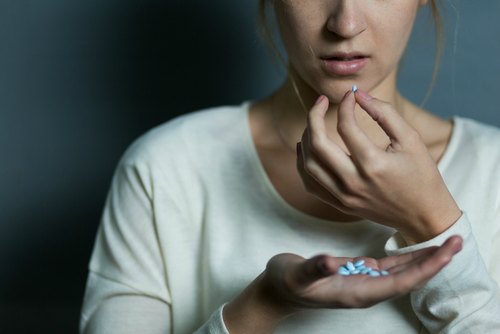
In 2006 her tongue began rolling over in her mouth, a sign of developing Tardive Dyskinesia (stiff jerky movements of the face and body, grimacing and sticking out the tongue). As I stated in Part 2 of this series, this is due to an alteration of the physiological dopamine/acetylcholine ratio in the basal ganglia, in fact, as Robert Whitaker point outs, this means that the Basal ganglia (that part of the brain that controls motor movement) is becoming permanently dysfunctional. Despite all of this medication and the risks involved in taking this stuff (which no doubt Cathy was not aware of) she believed that Risperdal was essential to her mental health. Robert Whitaker when he interviewed Cathy he raised the question what would her life had been had she not taken the drugs.
In Cathy’s viewpoint this is a haunting question, but it’s too late now and certainly not worth dwelling on the past. My only comment, it is never too late to fix the problem and discard the drugs, and if you scroll to the top of this article you will get a good part of the solution.
(Thank you Mr Whitaker for the kind courtesy for me to analyze the interview)
Allostasis
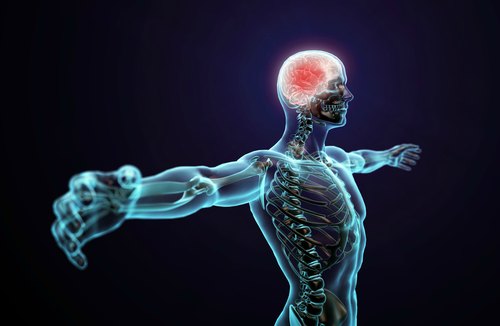
By discussing these case studies I think you will grasp an appreciation how dangerous these anti-psychotic drugs really are, especially taken over a long period of time, causing untold permanent damage to your own physiology. Let us consider Allostasis (Grace Jackson presents this so well in her book ‘Rethinking psychiatric drugs’), which refers to the collective adaptations produced by the body in response to internal and external input. As Dr Jackson points out Allostasis is contrary to conventional medicine’s idea of Homeostasis, which defines the body mechanism to always maintain stability through constancy..which is why your physician wants everybody to have the same blood pressure, the same cholesterol value..ya de ya de ya..which is not only a false approach to the body but a foolish one. Allostatic processes involve the nervous systems, spinal cord and of course the brain. The HPA (Hypothalamus-Pituitary-Adrenal) axis in concert with the Autonomic Nervous System (ANS) controls the body’s stress response is a case in point. Let us distinguish between Homeostasis and Allostasis…
Homeostasis‘s true meaning = Balance Allostasis = Collective adaptation produced by the body in response to internal and external input.

The Body’s Stress Response- The Hypothalamus
The picture below explains diagrammatically the axial components and their interaction with each other. Any type of stress perceived by the body including immune response, physical activity, the sleep/wake cycle, any disorder such as Anxiety etc can trigger this axis. Pertaining to our discussion perceived stress can be Anxiety disorder, Bipolar disorder, Insomnia, Post Traumatic stress. ADHD. Depression etc. In the case of Short term stress (such as avoiding a speeding car), once it triggers it regulates several physiological processes via the autonomic nervous system switching on the sympathetic branch (the body’s ‘Gas Pedal’) putting the body into a fight or flight condition, shutting down the digestion system, shunting blood flow to muscles, the heart, increasing respiratory rates, blood pressure, and pulse rate etc. In addition the HPA gets activated after, triggering Cortisol to be released from the Adrenal Cortex. The hypothalamus, is an incredibly essential control centre, whose primary function is to maintain physiological equilibrium allostatically. It achieves this by producing essential hormones to control various cells, organs and autonomic/endocrine functions and using a series of feedback loops maintaining the body’s ‘set point’ of equilibrium, so any deviation is transmitted back via feedback circuitry triggering the hypothalamus to make the necessary adjustment.
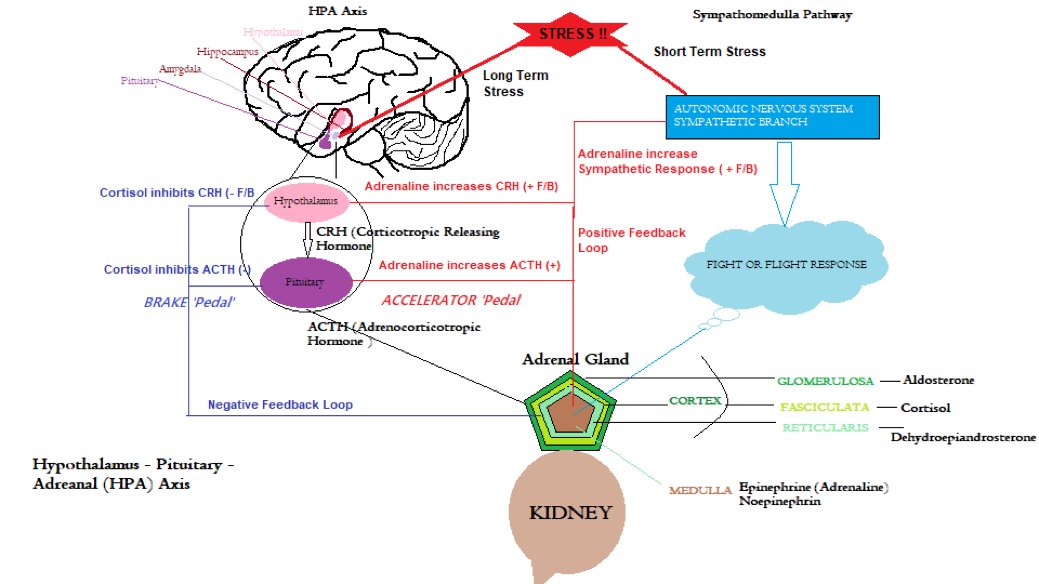
The Body’s Stress Response- CRH (Corticotropic Releasing Hormone)
In the case of perceived stress the Amygdala (an area of the brain responsible for emotional processing) senses a stress signal and sounds the alarm by sending a distress signal to the Hypothalamus. The hypothalamus then alerts the pituitary gland which in turn causes the adrenals to release the Cortisol hormone throughout the body, to regulate metabolism, reduce inflammation, and control blood pressure and blood sugar levels etc. The hypothalamus achieves this by releasing a hormone known as CRH (Corticotropic Releasing Hormone) which initially triggers the Pituitary gland ( a main endocrine gland that produces hormones to control many different body processes such as releasing a hormone Prolactin which induces milk production in the female breast, and also secretes controlling hormones for the Adrenal glands, thyroid gland, ovaries and Testes. It controls metabolism and is a storage facility for hypothalamic hormones to control water balance and blood pressure and oxytocin for uterine contractions and milk secretion).
The Body’s Stress Response- ACTH (Adrenocorticotropic hormone)
In response to stress, the Pituitary, once it receives the CRH hormone, it in turn releases ACTH (Adrenocorticotropic hormone) to stimulate the adrenal to release cortisol from the Fasciculata portion of the Adrenal Cortex (as shown in our diagram).
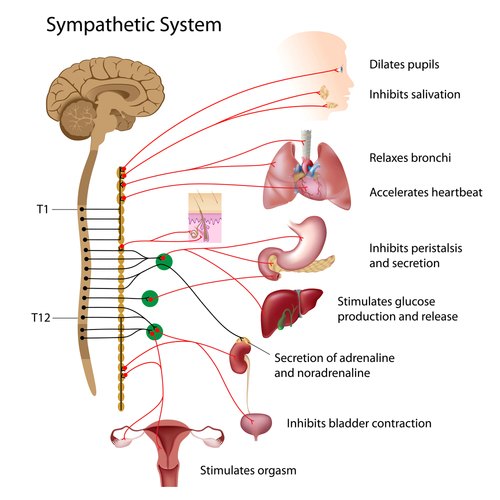
The Body’s Stress Response – Dual branch stress response ANS & HPA
From our diagram we have shown 2 stress branches, one that is directed toward the HPA, and the other to the autonomic nervous system (sympathetic branch). The Hypothalamus activates the sympathetic nervous system stress branch first to the Adrenal Medulla which in turn releases Epinephrine (we all know as Adrenaline) and norepinephrine* which is pumped into the bloodstream circulating through the body via the sympathetic branch to make the necessary physiological changes such as shutting down the digestion system, shunting blood flow to muscles, the heart, increasing respiratory rates, blood pressure, and pulse rate etc.as stated above. This stress response process also open up the airways to the lungs, extra oxygen is shunted to the brain to maintain alertness, and the epinephrine triggers the release of blood sugars from storage to supply extra energy as required. The rapidity of these sub processes enables the host to react immediately even before the brain’s visual centres have had a chance to fully process what is happening ( as in the case of avoiding an oncoming car for example).
* norepinephrine is mainly manufactured inside nerve axons (nerve shafts) and stored inside small fluid filled sacs (vesicles), and released when an electrical impulse travels down the nerve fiber. Acting as a neurotransmitter it travels across the gap between 2 nerves binding to a receptor of the second nerve thus stimulating the second nerve to respond. norepinephrine is a vasoconstrictor (narrowing of blood vessels) so it is useful to maintain blood pressure under stress. It is also made in the Adrenal medulla synthesized from Dopamine and then released into the bloodstream as a hormone. Inside the adrenal medulla epinephrine is manufactured from norepinephrine. Both norepinephrine and Epinephrine work together activating the fight or flight response where the former increases the rate of contractions in the heart. In addition norepinephrine activates Alpha receptors such as insulin secretion from the Pancreas, glycogen breakdown in the liver and muscle. While epinephrine activates both Alpha and Beta receptors (such as glucagon secretion from the pancreas, increased ACTH secretion by the Pituitary and increases fat breakdown from the adipose tissue.

The Body’s Stress Response – The ANS ‘Gas & brake’ control
This sympathetic ANS response is triggered first and as the initial surge of epinephrine subsides the hypothalamus activates the HPA stress branch. This axis relies on a series of hormonal signals from the sympathetic nervous system (specifically Adrenaline (Epinephrine) to keep the ‘gas pedal’ pressed down, as it does within the autonomic nervous system. The body continues in this ‘revved up condition until the stress threat has passed, and cortisol levels drop and the Parasympathetic branch of the ANS applies the brake and dampens the stress response. As I have stated before the ‘physiological wiring’ from the adrenal gland via the solar plexus to the sympathetic nervous system is ‘one way’, meaning there is chemical ‘ON’ switch but no OFF switch.
Stress Characteristics

Stress appears in 2 forms, Short term stress (like avoiding a speeding car, delivering a speech, taking an exam etc) which has a typical time duration measured in hours or no more than 2 days for example. On the other hand if stress within the host is a ‘smouldering’ type, an example of long term stress, which tends to be accumulative that can last for years even decades. This kind of stress develops over time within say a stressful job such as a pilot or a dentist. Although the literature states that psychotropic drugs regulate the HPA, I believe it has the opposite effect and in fact (as we will explore in the next part) is a repeated stress exposure by repeatedly infecting the body with toxins.
Switching Stress Off

To switch off stress you need to increase GH (Growth Hormone ) which is produced by the Pituitary gland that works in opposition to Cortisol, and the way to do this is enough sleep when GH gets turned on (GH production decreases after the age of 50 so it’s imperative that if you are an older member of society like me you need to get as much sleep as your body requires..I go to bed at 9:30 pm and I rise around 6 am ready for my daily jog). In addition you need to keep IGF (Insulin Growth Factor) under control by having 3 squares/day with no snacking, since IGF which is produced by the liver regulates blood sugars during fasting and regulates body fat when you are eating. Make sure you take plenty of Vitamin D3 sun exposure, walk, jog, whatever, ensure you try and take in 4700 mg of Potassium/day (this is almost impossible but try and drink a blend of green leafy vegetables especially Beet leaves (1 cup = 1500 mg of Potassium), Vitamin B1 and calcium.
Conclusions
I have presented (or should I say re-presented ) a case study from Robert Whitaker’s great book `Anatomy of an Epidemic` explaining how one young innocent girl who just wanted a normal life was ruined by unnecessary poisonous drugs prescribed to her to do what ?? heal her??…treat her ?? or convert her life into rags and tatters. This is a travesty..I have no clue if this woman is still alive, or if she found the truth about real healing..only Mr Whitaker may know this.
I have described the body’s response to stress which consists of the Allostatic process involving the nervous systems, spinal cord and of course the brain. This process is achieved using the HPA (Hypothalamus-Pituitary-Adrenal) axis in concert with the Autonomic Nervous System (ANS). In the next part we will look at another case study and a follow on discussion concerning Allostatic load on the body and how it pertains to psychotropic drugs. Furthermore we will investigate some of the negative physiological effects that drugs induce on the HPA axis effectively switching this cortisol thermostat down namely Corticotropin-Releasing Hormone Antagonist (CRH antagonist) drugs, although researchers were having trouble getting this drug to cross the BBB (Thank God). Stay tuned for the next exciting story from the ‘Annals of Madness’.
Manic depression is searching my soul
I know what I want
But I just don’t know, honey
How to go about getting it
Feeling sweet feeling
Drops from my fingers fingers
Manic depression is captured my soul
Music sweet music
I wish I could caress caress caress
Manic depression is a frustrating mess
Oh!

Partial song lyrics from the Jimi Hendrix’s Experience ‘Manic Depression’
References/Acknowledgments:
- Anatomy of an Epidemic Robert Whitaker Book 2015
- HPA, Akathisia.Dystonia Wikipedia
- Rethinking Psychiatric drugs Grace Jackson Book 2005
- Risperdal, Haldol, Ativan, Tegretol, Halcion, Cogentin Drugs.com
- Understanding the stress response Harvard Medical School 2011/2016
- Norepinephrine vs epinephrine: what’s the difference 2016 Drugs.com
- Manic depression lyrics song by the Jimi Hendrix Experience Google Play music
About The Author: Eric Malouin
In terms of my heritage I am not a thoroughbred, I am half English from England and half French Canadian from Quebec. Having spent the last 10 years in Medical research I thought that it was time to share my passion for true health to anybody interested in maintaining health without using conventional medicine. Once in the distant past I lived off conventional grocery shelves until you visit the man in the white coat and then a light shines through the darkness that you had not realized you were in… I was in..the twilight zone….I cured my own problems using natural methods, although they were not a big deal since I have always exercised..jogging every morning and tennis 12 hours/week, swimming but I was eating a lot of devil food that was causing my body to become unbalanced..an easy fix..reprogrammed my taste buds and gave the food back to the devil…lol
I hope you enjoy the articles……
Regards,
Eric
Contact the Author: emalouin@gmail.com